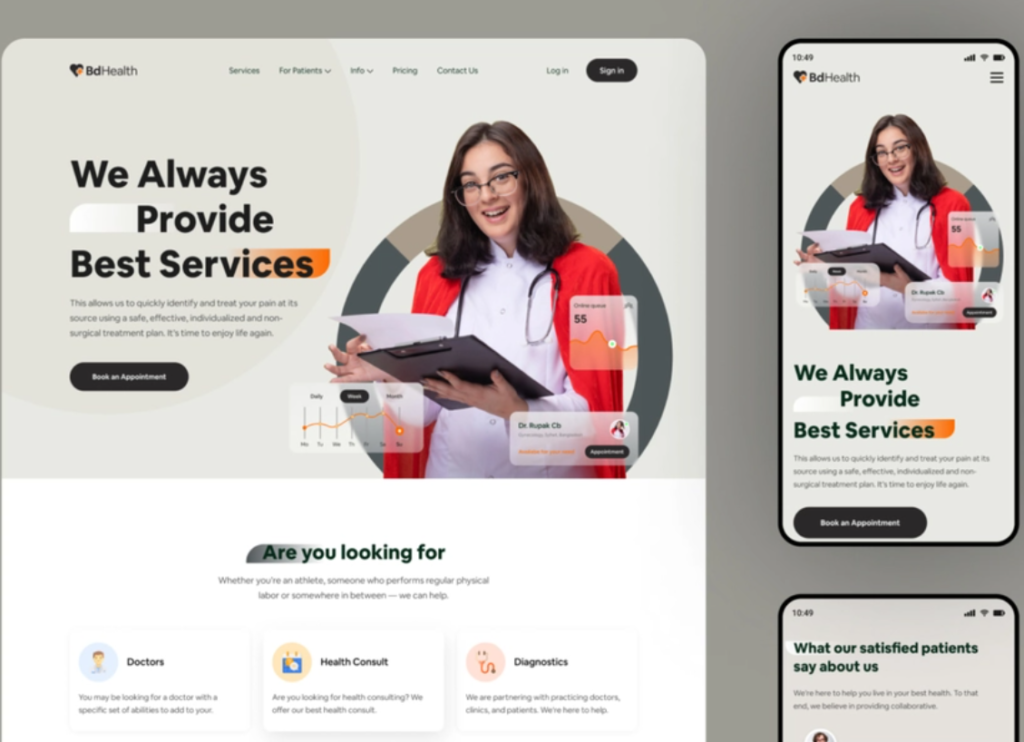Blitz News Digest
Stay updated with the latest trends and insights.
Responsive Web Design: A Love Story Between Users and Devices
Uncover the romance of responsive web design that sparks joy for users on any device. Discover the secrets to a seamless experience!
The Art of Responsive Web Design: Creating Seamless User Experiences Across Devices
The art of responsive web design is essential in today's digital landscape, where users access websites from a multitude of devices. Creating seamless user experiences means understanding how different screen sizes and resolutions affect layout and functionality. A well-designed responsive website adapts its content and layout based on the user's device, ensuring that it remains visually appealing and easy to navigate. Key principles to consider when embarking on this design journey include:
- Fluid grid layouts
- Flexible images
- Media queries
Implementing these principles helps achieve a uniform user experience, which is crucial for retaining visitors and improving engagement. By utilizing responsive web design, designers can create websites that not only look great but also perform well across all platforms. As mobile usage continues to rise, optimizing for different devices is no longer optional; it has become a necessity. Embracing this design philosophy not only enhances aesthetics but significantly boosts your site's SEO, making it easier for users to find and interact with your content.

Understanding Breakpoints: How to Design for Every Screen Size
In today's digital landscape, understanding breakpoints is crucial for designing responsive websites that provide a seamless user experience across all devices. Breakpoints are specific points within the CSS media queries that dictate how a web page's layout adjusts as the viewport changes size. Typically, these breakpoints correspond to standard device widths, ensuring that your design not only looks great on desktops but also adapts elegantly to tablets and smartphones. Implementing well-defined breakpoints will help you create a more flexible layout, enhancing usability and ensuring your content is easily accessible.
When establishing breakpoints, it’s essential to consider the types of devices your audience is using. A popular approach involves setting three to four major breakpoints that cater to varying screen sizes:
- Mobile devices (up to 480px)
- Tablets (481px to 768px)
- Laptops (769px to 1024px)
- Desktops (1025px and above)
This method allows designers to create tailored experiences by refining the visual hierarchy and layout at each interval, ensuring that users can interact with your content without friction, regardless of the device they choose.
Why Mobile-First Design Matters: Enhancing User Engagement on All Platforms
In today’s digital landscape, where over 50% of web traffic comes from mobile devices, adopting a mobile-first design approach is essential. This strategy prioritizes the mobile experience, ensuring that websites are optimized for users on smartphones and tablets first, before scaling up for larger screens. By focusing on mobile design, businesses can significantly enhance user engagement, as a seamless and intuitive interface leads to lower bounce rates and higher time spent on the site. When users navigate easily through a well-structured mobile site, they're more likely to return, driving repeat traffic and fostering brand loyalty.
Moreover, implementing a mobile-first design is crucial for improving search engine rankings. Google’s algorithms favor mobile-optimized sites, meaning that a well-executed mobile design not only benefits user experience but also contributes to better SEO performance. As such, businesses that prioritize mobile-first design are likely to see notable benefits in their online presence. To stay ahead of the curve, companies should consider using techniques such as responsive design, faster loading times, and streamlined navigation to enhance user engagement across all platforms. By doing so, they create a more inclusive digital environment that resonates with users, regardless of the device they use.